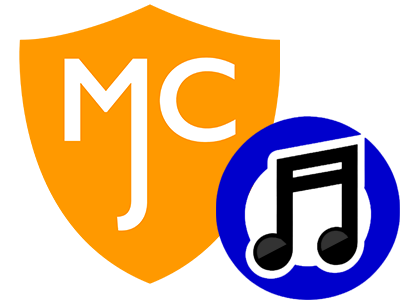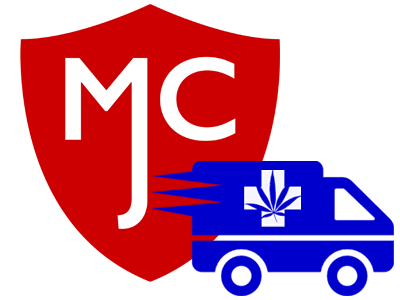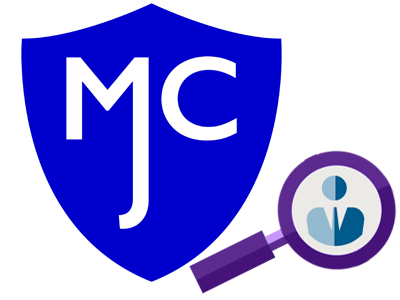
Drug tests are commonly used in various settings, such as employment, medical evaluations, and legal cases. However, these tests can sometimes produce false positive results, where a test shows the presence of a drug even if the individual has not used it. Understanding the factors that can contribute to false positives in drug testing is important for accurate result interpretation.
Key Takeaways:
- False positive results in drug testing can occur, showing the presence of a drug even when an individual has not used it.
- Certain medications and foods can lead to false positives on drug tests, so it’s crucial to be aware of these potential factors.
- Drug testing methods, such as immunoassays and GC-MS, have their limitations and can contribute to false positive results.
- Confirmatory testing, such as GC-MS, should be conducted to ensure the accuracy of positive results.
- Communication with the testing facility and understanding the various factors affecting drug test results are essential for proper interpretation.
Common Medications That Can Cause False Positives
In drug testing, it’s crucial to consider the potential for false positive results. Certain medications can lead to inaccurate drug test outcomes, which can have serious consequences for individuals. Here, we explore some common medications that can cause false positives and highlight the importance of reliable result interpretation.
Medications and False Positives
When interpreting drug test results, it’s essential to be aware of medications that can result in false positives. For example, quinolone antibiotics and rifampin can lead to false positives for opiates. This means that individuals who have not used opiates may test positive due to these medications. Similarly, medications such as verapamil, quetiapine, diphenhydramine, and doxylamine can cause false positive results for methadone. Recognizing these medications and their potential impact on drug test outcomes is crucial for accurate interpretation.
| Medication | False Positive |
|---|---|
| Quinolone antibiotics | Opiates |
| Rifampin | Opiates |
| Verapamil | Methadone |
| Quetiapine | Methadone |
| Diphenhydramine | Methadone |
| Doxylamine | Methadone |
It’s essential to consider these medications when interpreting drug test results to avoid incorrect allegations of illicit drug use.
False positives can have significant implications for individuals, potentially affecting employment opportunities, legal cases, or medical evaluations. Understanding the medications that can cause false positives is critical for accurate result interpretation and ensuring fair treatment.
Foods and Substances That Can Cause False Positives
When it comes to drug testing, it’s not just medications that can lead to false positive results. Certain foods and substances can also play a role in producing inaccurate test outcomes. It’s crucial to understand these factors to ensure accurate result interpretation.
One example is poppy seeds, which contain small amounts of codeine and morphine. These compounds can cause positive opiate screenings, even though the individual hasn’t used illicit drugs. So, if you’re a fan of poppy seed bagels or muffins, it’s essential to be aware that they can potentially trigger a false positive on a drug test.
Another substance to be mindful of is hemp-derived CBD oil. While CBD itself does not cause false positives, CBD products can contain traces of THC, the psychoactive component of cannabis. Regular use of these products can lead to THC accumulation in the body, which may be detected in drug tests. So, if you’re using CBD and expect to undergo drug testing, it’s important to keep this in mind to avoid any potential complications.
To summarize, certain foods such as poppy seeds and substances like hemp-derived CBD oil can contribute to false positives on drug tests. Being aware of these possibilities and informing the testing facility beforehand can help ensure accurate result interpretation and prevent any unnecessary implications.
| Substance | Impact on Drug Test |
|---|---|
| Poppy Seeds | Can cause false positive for opiates due to small amounts of codeine and morphine. |
| Hemp-Derived CBD Oil | May lead to false positive for THC, the psychoactive component of cannabis, due to potential traces of THC in the product. |
Types of Drug Testing Methods
When it comes to drug testing, various methods are employed to detect the presence of drugs in an individual’s system. Two commonly used methods are immunoassays and gas chromatography-mass spectroscopy (GC-MS). Each method has its own strengths and limitations, which should be considered when interpreting drug test results.
Immunoassays
Immunoassays are the most widely used method for drug testing, particularly in hospitals and other healthcare settings. These tests work by detecting the presence of certain drug metabolites in urine, saliva, or other bodily fluids. Immunoassays are popular due to their simplicity and the rapid results they provide. However, they do have limitations that can lead to false positive results.
One limitation of immunoassays is their potential for cross-reactivity with other substances, which can result in false positive results. For example, certain medications or dietary supplements may trigger a positive response on an immunoassay, even if no illicit drugs have been used. It’s essential to consider the possibility of false positives and confirmatory testing when interpreting results from immunoassays.
Gas Chromatography-Mass Spectroscopy (GC-MS)
GC-MS is considered the gold standard for confirmatory drug testing. This method offers a higher level of accuracy and specificity compared to immunoassays. GC-MS works by separating and analyzing the chemical components of a sample to identify the presence of specific drugs or their metabolites.
While GC-MS provides more accurate results, it is a more expensive and time-consuming method than immunoassays. Therefore, it is typically used as a follow-up to immunoassay screenings when there is a positive result. Confirmatory testing using GC-MS can help confirm or refute the initial findings and provide more reliable evidence in cases where the stakes are high, such as in legal proceedings.
| Testing Method | Strengths | Limitations |
|---|---|---|
| Immunoassays | Simple and rapid analysis | Potential for false positive results |
| GC-MS | High accuracy and specificity | Expensive and time-consuming |
Limitations of Immunoassays
When it comes to drug testing, immunoassays are commonly used due to their simplicity and rapid analysis. However, it is important to understand that these tests have limitations that can lead to false positive and false negative results. By recognizing these limitations, we can better interpret drug test results and avoid unnecessary implications.
Specificity and Cross-Reactivity
One of the limitations of immunoassays is their specificity, or lack thereof. These tests can sometimes cross-react with substances other than the targeted drugs, leading to false positive results. For example, certain medications and food substances can trigger a positive response on immunoassays, even if the individual has not used illicit drugs. It is important to consider these factors when interpreting drug test results and to be aware that false positives can occur.
Cutoff Levels and Recent Drug Use
Another limitation of immunoassays is the use of cutoff levels to determine positive or negative results. These cutoff levels are set to balance sensitivity and specificity, but they may not accurately reflect recent drug use or intoxication. For instance, an individual who used a drug several days ago may still test negative if the drug has been cleared from their system below the cutoff level. Conversely, an individual who used a drug very recently may test positive, even if they are no longer intoxicated. It is crucial to consider the context and timing of drug use when interpreting immunoassay results.
The Need for Confirmatory Testing
Given the limitations of immunoassays, it is important to confirm positive results with more specific and accurate methods, such as gas chromatography-mass spectroscopy (GC-MS). GC-MS is considered the gold standard for confirmatory testing due to its higher accuracy and ability to differentiate between similar substances. Confirmatory testing helps ensure the validity of the initial immunoassay results and can prevent unnecessary accusations or implications.
| Limitations of Immunoassays | Implications |
|---|---|
| Specificity | False positive results due to cross-reactivity with certain medications and food substances. |
| Cutoff Levels | Inaccurate reflection of recent drug use or intoxication. |
| The Need for Confirmatory Testing | Confirm positive results with more specific and accurate methods, such as GC-MS. |
Understanding the limitations of immunoassays is crucial for accurate result interpretation in drug testing. By recognizing the potential for false positives and false negatives, we can navigate the complexities of drug test results and ensure fair and informed decision-making.
Drug Detection Times and Interpretation
Understanding the detection times for different drugs in urine is crucial for accurate interpretation of drug test results. Various factors can influence detection times, including factors such as dose, elimination half-life, urine pH, and frequency of use. Here, we provide an overview of the typical detection times for commonly tested drugs.
Drug Detection Times in Urine
| Drug | Detection Time |
|---|---|
| Amphetamines | Up to 3 days |
| Benzodiazepines | Up to 3 weeks |
| Cannabinoids | Up to 6 weeks (heavy users) |
| Cocaine | 3-5 days |
| Opioids | 3-5 days |
| Phencyclidine | 8 days |
It’s important to note that these are general guidelines and individual variations can occur. Drug detection times can be influenced by factors such as metabolism, hydration levels, and the sensitivity of the drug test used. Additionally, these detection times primarily apply to urine drug screens and may vary for other types of tests.
When interpreting drug test results, it is essential to consider the specific detection times and the context of the test. For example, a positive result for a drug that was used within the expected detection window is more likely to indicate recent drug use, while a positive result outside the expected detection window may require further investigation to rule out false positives or other factors influencing the result.
In conclusion, understanding the detection times for different drugs can assist in the accurate interpretation of drug test results. It is important to consider individual factors that may affect detection times and to consult with experts or medical professionals for specific guidance related to drug testing and result interpretation.
Managing False Positive Results
When a drug test yields a positive result, but the individual denies any drug use, it is essential to consider the possibility of a false positive. False positives can occur due to various factors, including medications, foods, and substances that can interfere with the accuracy of the test. To manage false positive results effectively, it is crucial to follow certain steps.
The first step is to request a confirmatory assay, such as gas chromatography-mass spectroscopy (GC-MS), which is a more specific and accurate testing method. GC-MS can provide a definitive answer and help confirm or refute the initial positive result. Confirmatory testing should be conducted in a certified laboratory to ensure reliable and trustworthy results.
If the confirmatory assay also shows positive results, it may be necessary to repeat the test. A repeat test can help rule out any potential laboratory errors or false positives that may have occurred. It is important to communicate with the individual and any involved parties throughout the process to address their concerns and minimize the impact of the false positive result.
| Steps to Manage False Positive Results |
|---|
| 1. Request a confirmatory assay, such as GC-MS, for more accurate results. |
| 2. Conduct the confirmatory testing in a certified laboratory. |
| 3. Consider repeat testing to rule out any potential errors or false positives. |
| 4. Maintain open communication with the individual and involved parties. |
Managing false positive results in drug testing requires a careful and thorough approach. By following these steps and ensuring proper communication, the impact of a false positive can be minimized, and the accuracy of the test results can be upheld.
Testing Positive for THC While Using CBD
Using CBD products can potentially result in a false positive for THC, the psychoactive component of marijuana. While CBD itself does not cause a false positive, hemp-derived CBD products can contain traces of THC. Regular use of these products can lead to THC accumulation in the body, which may be detected in drug tests. It is important to be aware of this when using CBD and undergoing drug testing.
“Regular use of hemp-derived CBD products can result in the accumulation of THC in the body, leading to a positive drug test for THC.”
When taking CBD products, it is crucial to consider the source and the quality of the product. To minimize the risk of testing positive for THC, individuals should opt for CBD products that are labeled as THC-free or undergo third-party testing to ensure the absence of THC. Additionally, communicating the use of CBD products to the testing facility beforehand can help in the interpretation of drug test results and prevent any unwarranted consequences.
The Potential Impact of False Positives
Testing positive for THC while using CBD can have significant implications for individuals, especially in employment or legal settings. A false positive result can lead to wrongful accusations of drug use, jeopardize job prospects, or even result in legal consequences. It is important for individuals, healthcare providers, and testing facilities to be aware of the potential for false positives and take necessary precautions to ensure accurate result interpretation.
By understanding the relationship between CBD use and potential THC detection, individuals can make informed decisions and navigate drug testing situations more effectively. Transparency in communication, reliance on quality CBD products, and awareness of testing protocols will help minimize the risk of false positives and ensure fair and accurate drug test results.

Preparing for a Drug Test
Before undergoing a drug test, it is crucial to ensure accurate and reliable results. Here are some essential steps to take in preparation for a drug test:
- Inform the testing facility: Prior to the drug test, inform the testing facility of any medications or substances you are currently taking. This includes prescription medications, over-the-counter drugs, herbal supplements, and even vitamins. Providing this information beforehand will help prevent any misinterpretation of the test results.
- Follow prescribed medications: It is important to continue taking your prescribed medications as directed by your healthcare provider. Abruptly stopping or altering medication doses can have adverse effects on your health and may also affect the accuracy of the drug test results.
- Avoid quick-fix remedies or detoxes: There are numerous products in the market that claim to help individuals pass drug tests by detoxing their system or masking the presence of drugs. However, these quick-fix remedies are often unreliable and may lead to false negative results. It is best to avoid such products and rely on accurate and legitimate testing methods.
- Stay hydrated: Drinking plenty of water leading up to the drug test can help flush out any toxins from your system. However, it is important not to overhydrate, as this may result in a diluted urine sample, which can be deemed inconclusive or invalid.
By following these steps, you can help ensure that your drug test results are accurate and reflect your true medical condition. If you have any concerns or questions regarding the drug testing process, it is always recommended to consult with your healthcare provider or the testing facility for guidance.

Table: Common Medications That Can Cause False Positives
| Medication | False Positive |
|---|---|
| Quinolone antibiotics and rifampin | Opiates |
| Verapamil, quetiapine, diphenhydramine, and doxylamine | Methadone |
Other Factors Affecting Drug Test Results
When interpreting drug test results, it is important to consider various factors that can impact the accuracy and reliability of the findings. Understanding these factors can help us make informed decisions and avoid potential misinterpretations. Here, we will explore some of the key elements that can influence drug test results.
Laboratory Methods and Sensitivity
The effectiveness of drug testing largely depends on the laboratory methods used. Different methods, such as immunoassays and gas chromatography-mass spectroscopy (GC-MS), have varying levels of sensitivity and specificity. Immunoassays, while commonly used and cost-effective, are more prone to false positives due to their cross-reactivity with certain substances. GC-MS, on the other hand, is considered the gold standard for confirmatory testing because of its higher accuracy.
Cutoff Levels and Specificity
Cutoff levels are predetermined thresholds used to determine whether a drug test result is positive or negative. These levels vary depending on the drug being tested and the testing method used. It is important to note that cutoff levels may not always accurately reflect recent drug use or intoxication. Additionally, the specificity of the test can influence the likelihood of false positive or false negative results. Tests with higher specificity are less likely to produce inaccurate results.
| Factors | Impact |
|---|---|
| Laboratory methods | Determines the accuracy and sensitivity of the test |
| Cutoff levels | Thresholds used to determine positive or negative results |
| Specificity | The likelihood of false positive or false negative results |
Medical Conditions and Interference
Certain medical conditions can interfere with drug test results, leading to false positives or false negatives. For example, individuals with lactic acidosis, a condition characterized by high levels of lactic acid in the blood, may produce inaccurate drug test results. It is important to consider the individual’s overall health and any existing medical conditions when interpreting drug test findings.
In conclusion, drug test results can be influenced by various factors, including the laboratory methods used, cutoff levels, specificity, and the presence of certain medical conditions. By understanding these factors and their potential impact, we can interpret drug test results accurately and make informed decisions based on the findings.
Importance of Confirming Results
When a drug test yields a positive result, it is crucial to confirm the accuracy of the initial finding. Confirmatory testing plays a vital role in ensuring that the test results are reliable and that individuals are not falsely accused or implicated. One of the most widely used confirmatory methods is gas chromatography-mass spectrometry (GC-MS), which provides a more specific and accurate analysis of drug metabolites in the body.
GC-MS is considered the gold standard for confirmatory testing due to its high level of accuracy and reliability. By separating and analyzing the different components of a sample, GC-MS can identify specific drugs and their metabolites, allowing for a definitive answer regarding drug use. This method is particularly useful in cases where the initial drug test may have produced a false positive result or when legal implications are involved.
Accurate drug test results are essential for a variety of reasons. In employment settings, false positive results can lead to unjust consequences such as job loss or damaged reputation. In medical evaluations, relying on inaccurate drug test results can impact patient care and treatment decisions. Additionally, in legal cases, incorrect accusations can have severe legal and social implications for individuals. Therefore, confirming the accuracy of drug test results through methods like GC-MS is crucial for ensuring fairness, reliability, and integrity in drug testing procedures.
| Benefits of Confirmatory Testing using GC-MS |
|---|
| Increased accuracy and specificity |
| Elimination of false positive results |
| Definitive confirmation of drug presence |
| Protection against false accusations |
| Enhanced reliability and integrity of drug testing |
Conclusion
In conclusion, understanding the factors that can contribute to false positives in drug testing is crucial for accurate result interpretation. False positives can have significant implications for individuals in various settings, including employment, legal cases, and medical evaluations. It is important to be aware of medications and foods that can cause false positives, as well as the limitations of different drug testing methods.
By communicating any relevant information with the testing facility and requesting confirmatory testing if necessary, we can ensure the validity of the test results and prevent any unnecessary repercussions. Preparing for a drug test by informing the testing facility of any medications or substances that could potentially cause false positives is essential. Additionally, following prescribed medications and avoiding quick-fix remedies or detoxes can help avoid misinterpretation of the test results.
In conclusion, managing false positive results requires proper communication with all parties involved and consideration of the potential impact on the individual. Confirming positive results using more specific and accurate methods, such as gas chromatography-mass spectroscopy (GC-MS), is crucial to prevent false accusations or implications. By understanding the complexities of drug testing and taking necessary precautions, we can ensure accurate result interpretation and protect the rights of individuals.
FAQ
Can certain medications cause false positive results on drug tests?
Yes, certain medications such as quinolone antibiotics and rifampin can result in false positives for opiates, while medications like verapamil, quetiapine, diphenhydramine, and doxylamine can give false positive results for methadone.
Can certain foods and substances cause false positives on drug tests?
Yes, foods like poppy seeds and substances like hemp-derived CBD oil can lead to false positive results for opiates and cannabinoids, respectively.
What are the different methods used for drug testing?
Drug testing can be conducted using methods such as immunoassays and gas chromatography-mass spectroscopy (GC-MS).
What are the limitations of immunoassays in drug testing?
Immunoassays have limitations that can lead to false positive and false negative results, including limited specificity, cross-reactivity, and cutoff levels that may not accurately reflect recent drug use.
How long can drugs be detected in urine?
The detection times for drugs in urine can vary based on factors such as dose, elimination half-life, urine pH, and frequency of use. Generally, amphetamines can be detected for up to 3 days, benzodiazepines for up to 3 weeks, cannabinoids for up to 6 weeks in heavy users, cocaine for 3-5 days, opioids for 3-5 days, and phencyclidine for 8 days.
What should I do if a drug test yields a positive result, but I haven’t used drugs?
If you believe there may be a false positive, it is important to request a confirmatory assay, such as GC-MS, to provide more accurate results. Repeat testing may also be necessary to ensure the validity of the initial result.
Can using CBD products result in a false positive for THC?
While CBD itself does not cause a false positive, hemp-derived CBD products can contain traces of THC, which can accumulate in the body over time and potentially lead to a positive result on a drug test.
What should I do to prepare for a drug test?
Before undergoing a drug test, it is crucial to inform the testing facility of any medications or substances that could potentially cause a false positive result. It is also important to follow prescribed medications and avoid quick-fix remedies or detoxes that claim to help pass drug tests.
What other factors can affect drug test results?
Factors such as the laboratory methods used, cutoff levels, and the sensitivity and specificity of the tests can affect drug test results. Certain medical conditions, such as lactic acidosis, can also interfere with test accuracy.
Why is it important to confirm drug test results?
Confirmatory testing, such as using GC-MS, is crucial to provide definitive answers and prevent potential false accusations or implications. Working closely with laboratories and medical review officers helps ensure accurate result interpretation.
What are the potential consequences of false positive results in drug testing?
False positive results in drug testing can have significant implications for individuals, including potential consequences in employment, legal cases, or medical evaluations.
















